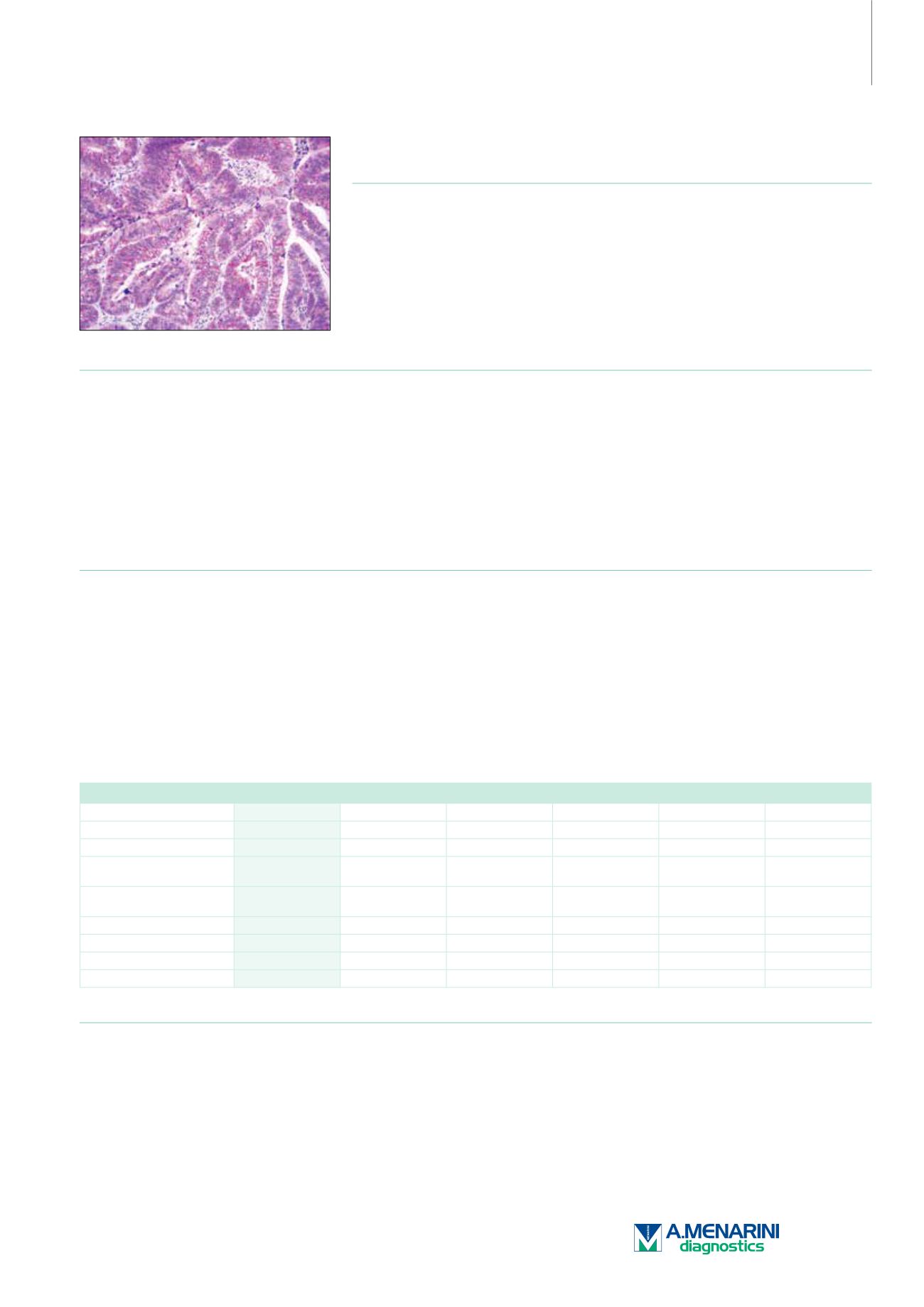
Advanced Solutions
for Advanced Pathology
Cadherin-17 (SP183)
Rabbit Monoclonal Antibody
Cat. No. Description
Volume
45645 IMPATH Cadherin-17 RTU R (SP183)
50 Tests
45632 Cadherin-17 RTU R (SP183)
7 ml Ready To Use
45608 Cadherin-17 0,1 R (SP183)
100 µl liquid Concentrated
45609 Cadherin-17 1 R (SP183)
1 ml liquid Concentrated
Product Specifications
Designation
IVD
Reactivity
Paraffin
Visualization
Cytoplasmic, Membranous
Control
Colorectal carcinoma
Stability
Up to 36 mo. at 2-8°C
Isotype
IgG
Manual Protocol*
• Pretreatment: Heat Induced Epitope
Retrieval (HIER)
• Primary Antibody Incubation Time:
10-30min @ 25-37°C
• 2-step polymer detection
*Please refer to product insert for complete protocol.
ImPath Protocol*
• Dewax: Dewax Solution 2 (DS2)
• Pretreatment: Retrieval Solution pH 9.0
(TR1) 32min @ 98-103°C
• Primary Antibody Incubation Time:
10-90min @ 25-37°C
• HRP Polymer (Universal) or AP Polymer
(Universal) for 12 min
*Please refer to product insert for complete protocol.
Product Description
Cadherin-17, also called liver-intestinal (LI) cadherin or human peptide transporter-1, is a member of the cadherin superfamily. Unlike some
classic cadherins, such as E-, N-, and P-cadherins, cadherin-17 has seven cadherin repeats instead of five within the extracellular domain and
only 20 amino-acid residues in the cytoplasmic domain. The markedly short cytoplasmic domain lacks homology with other cadherins and the
adhesive function of cadherin-17 is not dependent on association with other cytoplasmic proteins. The subcellular distribution of cadherin-17 is
also different from classic cadherins. In intestinal epithelial cells, E-cadherin is concentrated in adherens junctions whereas cadherin-17 is evenly
distributed along the lateral contact area. Human normal tissues that are strongly stained with cadherin-17 include appendicular epithelium,
colonic epithelium, and small intestinal epithelium. Other normal human tissues are not stained with cadherin-17. The results above indicate
cadherin-17 can be used as a marker for identification of primary sites of tumors. In-house studies have shown cadherin-17 expression is usually
diffuse and strong in colorectal adenocarcinomas, whereas it is usually focal or scattered in adenocarcinomas of the stomach, pancreas and bile
duct, and is virtually absent in tumors of other anatomic sites.
Neoplasms
Cadherin-17
CDX-2
S100P
GATA3
TTF-1
Napsin A
Colorectal Adenocarcinoma
+
+
-
-
-
-
Gastric Adenocarcinoma
+
+
-
-
-
-
Esophogeal
Adenocarcinoma
+
+
-
-
-
-
Pancreatic Ductal
Adenocarcinoma
-/+
+/-
+
-
-
-
Hepatocellular Carcinoma
-
-
-
-
-
-
Lung Adenocarcinoma
-
-
-
-
+
+
Breast Carcinoma
-
-
-
+
-
-
Ovarian Carcinoma
-
-
-
-
-
-
Reference
1. Su MC, et al. Mod Pathol. 2008; 21:1379–1386.
2. Gessner R, et al. Ann N Y Acad Sci. 2000; 915:136–143.
39


